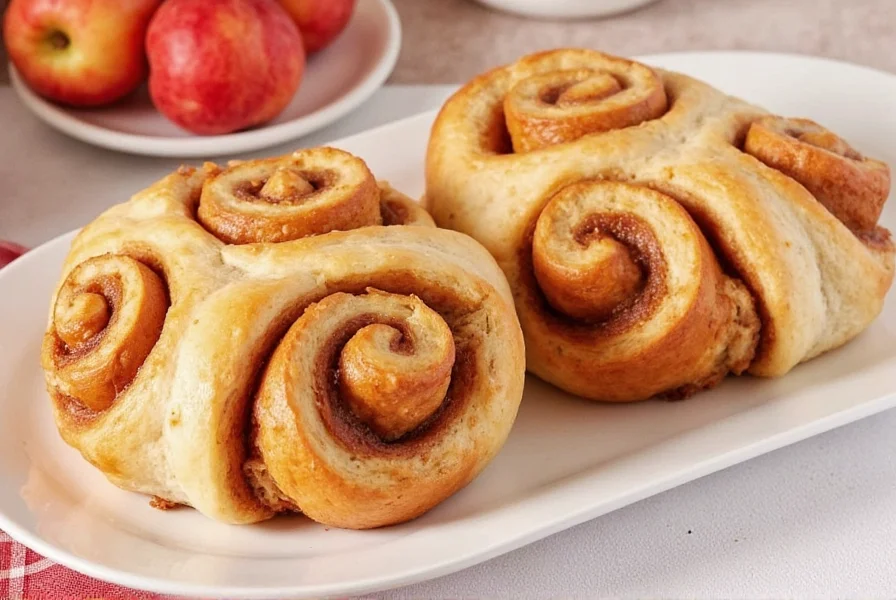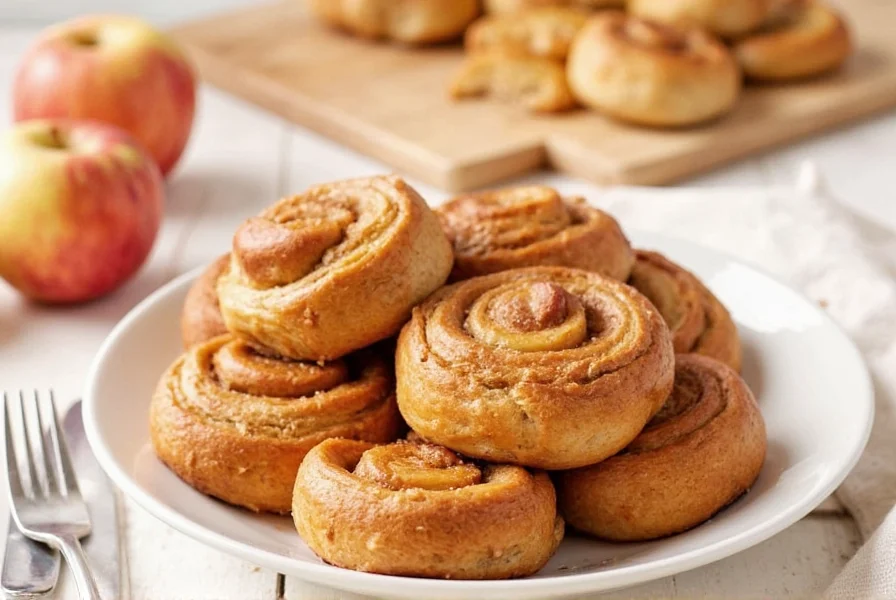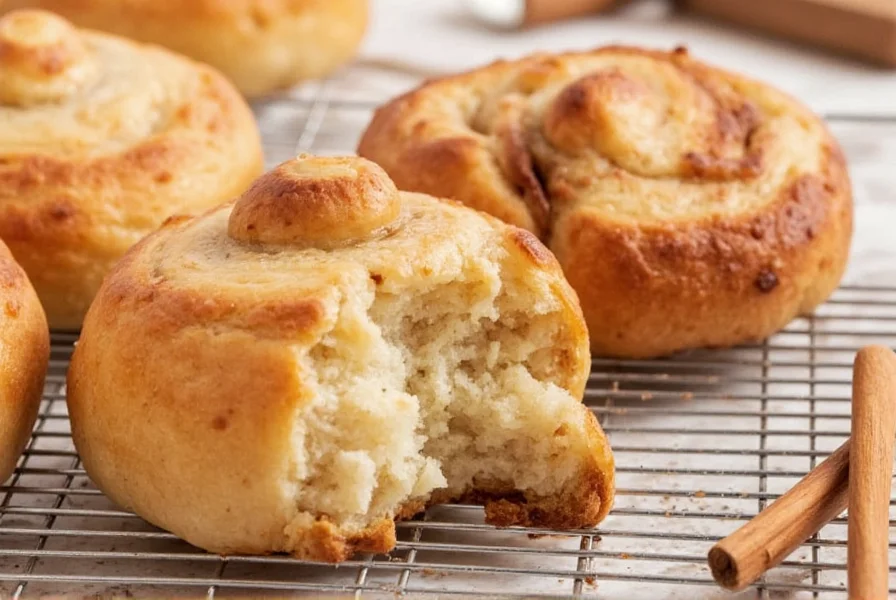Creating exceptional apple cinnamon buns requires understanding both the science of yeast dough and the art of balancing flavors. This guide provides professional techniques that transform a simple recipe into bakery-quality results, whether you're a beginner or experienced baker looking to perfect your craft.
The Essential Components of Perfect Apple Cinnamon Buns
What separates good apple cinnamon buns from extraordinary ones? The magic happens in three critical areas: dough texture, filling composition, and apple preparation. Unlike standard cinnamon rolls, the addition of apples introduces moisture variables that require careful handling to prevent soggy bottoms or dry buns.
For optimal results, select firm baking apples like Honeycrisp or Granny Smith that maintain structure during baking. Many home bakers make the mistake of using overly sweet varieties that break down too quickly, resulting in filling leakage and inconsistent texture throughout the bun.
| Ingredient | Standard Measurement | Professional Baker's Tip |
|---|---|---|
| All-purpose flour | 3½ cups (440g) | Spoon and level method prevents dense dough |
| Active dry yeast | 2¼ teaspoons | Test viability in warm liquid before use |
| Firm baking apples | 2 medium (300g) | Toss with 1 tsp lemon juice to prevent browning |
| Cinnamon | 2-3 tablespoons | Use Ceylon cinnamon for complex flavor profile |
| Unsalted butter | ⅓ cup softened | European-style (82% fat) creates richer flavor |
Step-by-Step Preparation Guide for Flawless Results
The most successful apple cinnamon buns start with properly activated yeast. Combine warm milk (105-110°F), sugar, and yeast, waiting 5-7 minutes until foamy. This simple step ensures your dough will rise properly without unpleasant yeast flavors.
When preparing the apples, dice them to uniform ¼-inch pieces. Larger chunks create uneven baking and potential leakage, while smaller pieces integrate better with the cinnamon filling. For professional results, sauté the apples briefly with 1 tablespoon of the filling butter until just beginning to soften—this concentrates flavor without compromising texture.

Avoiding Common Baking Mistakes
Many home bakers encounter issues with dense texture or filling leakage. The primary culprits include:
- Over-flouring the dough - Adds excess gluten that inhibits proper rising
- Incorrect oven temperature - Use an independent oven thermometer for accuracy
- Rolling technique errors - Start with tight, even pressure from the long edge
- Apple moisture content - Pat sautéed apples dry before adding to filling
For the ideal golden-brown finish without over-browning, position your baking pan in the center rack and rotate 180 degrees halfway through baking. The internal temperature should reach 190°F when properly baked.
Creative Variations for Special Occasions
Elevate your traditional apple cinnamon buns with these professional variations that maintain structural integrity while adding exciting flavors:
- Bourbon caramel apple version - Add 2 tablespoons bourbon to the apple mixture and drizzle finished buns with homemade caramel
- Apple cranberry twist - Incorporate dried cranberries into the filling for tart contrast
- Maple walnut crunch - Top with chopped toasted walnuts mixed with maple sugar before baking
- Overnight preparation method - Assemble rolls, refrigerate overnight, then bake in the morning

Storage and Serving Recommendations
While freshly baked apple cinnamon buns are ideal, proper storage maintains quality for up to 3 days. Keep them in an airtight container at room temperature with parchment between layers. For longer storage, freeze unbaked rolls on a baking sheet, then transfer to freezer bags. When ready to bake, thaw overnight in the refrigerator before proceeding.
Serve warm for the best experience—reheat individual buns for 15-20 seconds in the microwave or 5 minutes in a 300°F oven. Pair with strong coffee or vanilla chai to complement the sweet spices. For brunch gatherings, arrange on a decorative platter with fresh apple slices and cinnamon sticks for an elegant presentation.
Can I make apple cinnamon buns without yeast?
Yes, you can create a quick bread version using baking powder instead of yeast. However, the texture will be more like a muffin than traditional pull-apart cinnamon buns. For authentic results, yeast is essential as it creates the characteristic light, airy texture through proper fermentation.
Why do my apple cinnamon buns become soggy after baking?
Sogginess typically occurs when apples release too much moisture during baking. To prevent this, sauté diced apples briefly before adding to the filling, and always pat them dry. Using firm baking apples like Honeycrisp instead of softer varieties also helps maintain proper texture throughout the bun.
How can I prevent the filling from leaking out during baking?
To minimize filling leakage, ensure your dough is rolled tightly but evenly, pinch the seam securely, and avoid overfilling. Chilling the shaped rolls for 15-20 minutes before baking helps the dough set, creating a barrier that contains the filling during the initial baking phase.
What's the best way to reheat apple cinnamon buns without drying them out?
For optimal results, wrap individual buns in a damp paper towel and microwave for 15-20 seconds. Alternatively, place on a baking sheet and warm in a 300°F oven for 5 minutes. Adding a small bowl of water to the microwave or oven creates steam that prevents drying while reheating.
Can I prepare apple cinnamon buns ahead of time for holiday mornings?
Absolutely. Assemble the rolls, place them in your baking dish, cover tightly, and refrigerate overnight. In the morning, remove from the refrigerator 30 minutes before baking to take the chill off, then bake as directed. This method actually enhances flavor development through extended fermentation.











 浙公网安备
33010002000092号
浙公网安备
33010002000092号 浙B2-20120091-4
浙B2-20120091-4